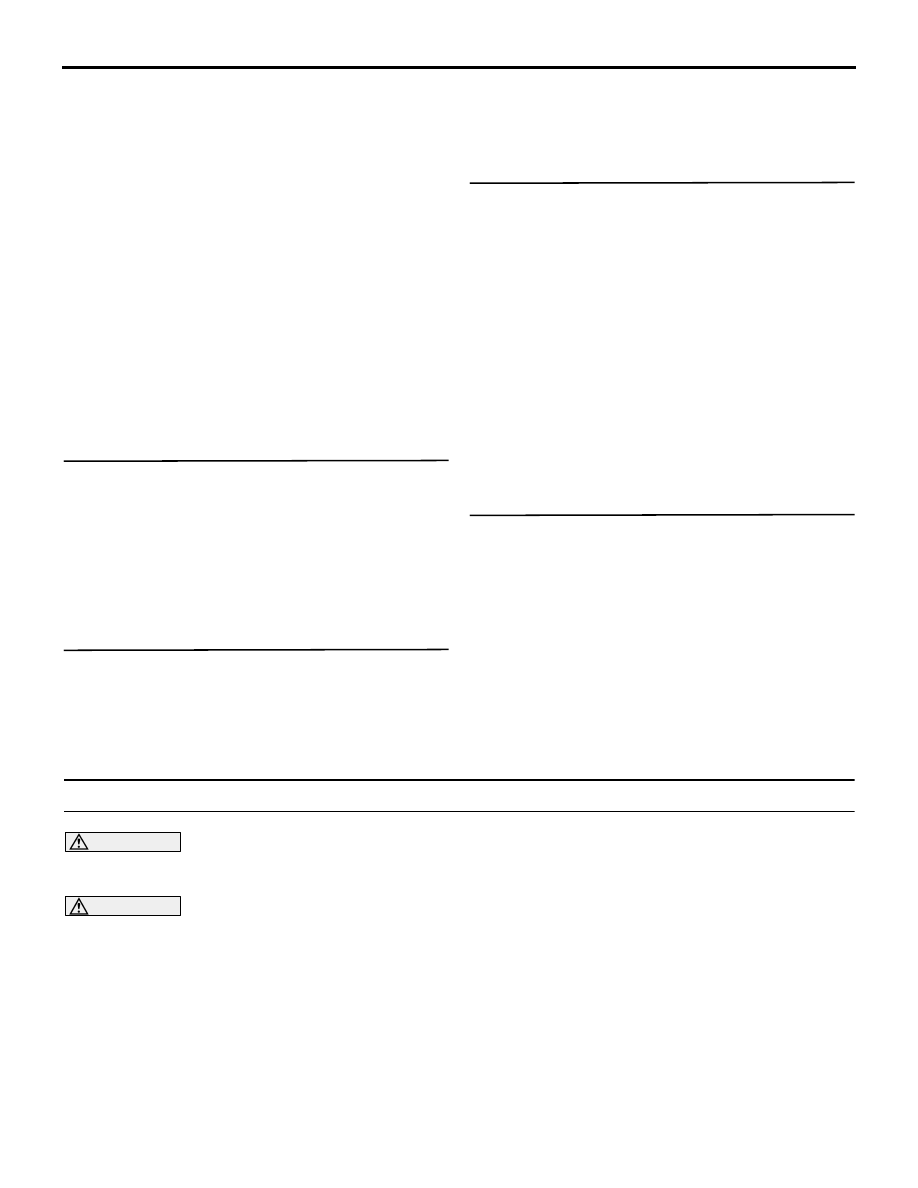Mitsubishi Outlander (2013+). Manual - part 310

TROUBLESHOOTING
MULTIPOINT FUEL INJECTION (MPI)
13A-121
GROUP 00
−
How to Use Troubleshoot-
ing/Inspection Service Points
−
How to Cope with
Intermittent Malfunctions ). It is possible to nar-
row down areas with a high possibility of malfunc-
tions from diagnosis codes set to each ECU that
performs CAN communication (Refer to GROUP
54C
−
Explanation about the M.U.T.-III CAN Bus
Diagnostics ).
FAIL-SAFE AND BACKUP FUNCTION
• Engine start is prohibited.
PROBABLE CAUSES
• Failed harness and connector
• Failed KOS-ECU
• Failed engine-ECU
DIAGNOSIS PROCEDURE
STEP 1. M.U.T.-III CAN bus diagnosis
• Use M.U.T.-III to perform CAN bus line diagnosis.
Q: Is the check result normal?
YES :
Go to Step 2.
NO :
Repair the CAN bus line (Refer to GROUP
54C
− Troubleshooting − CAN Bus
Diagnostics Table ). After repairing the CAN
bus line, go to Step 4.
STEP 2. M.U.T.-III diagnosis code
• Confirm the diagnosis code is set from the
KOS-ECU.
Q: Is diagnosis code set?
YES :
Perform troubleshooting of KOS-system
(Refer to GROUP 42B
− Troubleshooting −
Diagnosis Code Chart ).
NO :
Go to Step 3.
STEP 3. M.U.T.-III diagnosis code
• Reconfirmation of diagnosis code.
Confirm again the diagnosis code is set from the
engine-ECU.
1. Erase the set diagnosis code.
2. Ignition switch: "LOCK" (OFF)
→ "ON"
3. Confirm whether the diagnosis code is set.
Q: Is diagnosis code set?
YES :
After replacing engine-ECU, go to Step 4.
NO :
Intermittent malfunction in CAN bus line
between engine-ECU and KOS-ECU (Refer
to GROUP 00
− How to Use
Troubleshooting/Inspection Service Points
−
How to Cope with Intermittent Malfunctions
).
STEP 4. M.U.T.-III diagnosis code
• Reconfirmation of diagnosis code.
Confirm again the diagnosis code is set from the
engine-ECU.
1. Erase the set diagnosis code.
2. Ignition switch: "LOCK" (OFF)
→ "ON"
3. Confirm whether the diagnosis code is set.
Q: Is diagnosis code set?
YES :
Go to Step 1.
NO :
Check end.
Code No. U0415: ASC-ECU CAN Data Abnormality <Vehicles with ASC>
CAUTION
If diagnosis code U0415 is set from engine-ECU,
surely perform CAN bus line diagnosis.
CAUTION
Replace ECU after certainly confirming that the
communication circuits are normal.
TROUBLE JUDGMENT
Check Conditions
• More than 5 seconds have passed since the igni-
tion switch was turned to "ON" position.
• During engine running.
Judgement Criterion
• When the communication error is judged
between the engine-ECU and the ASC-ECU
COMMENTS ON TROUBLE SYMPTOM
Current malfunction
• The failure is possibly caused by malfunction of
the harness and connector in CAN bus line
between engine-ECU and ASC-ECU, by mal-
function in ASC-ECU signals, in ASC-ECU itself,
in engine-ECU.